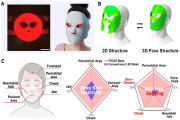Starting from October 1, China will officially ban 100W incandescent light bulb sales on the market. With less than one month out, industry experts show reasonable concerns about the market prospects incandescent light ban can bring to LED lighting bulb.
Industry experts note that Japan, Korea and North America are the major markets of LED light bulbs. With European debt crisis persists, LED industry is not too optimistic about the market prospects post October 1.
According to LEDinside, the LED research division of TrendForce, global big-name companies such as OSRAM, GE Lighting, Philips all released new LED light bulbs, and achieved good sales in Japan, Korea, and North America. Many Chinese LED firms followed suit and released their own LED light bulbs, but they failed to acquire the same success in Japan, Korea, North America, and even China.
According to LEDinside, Chinese LED light bulb industry’s target market is in agricultural area. However, with the high price and low awareness of LED light bulb, the acceptance in agricultural area is low. The high price also prevent LED light bulb’s awareness from increasing. In addition, whether or not LED light bulb can actually replace incandescent light bulb also stirs up a heated debate in the industry.
What concern consumers are as following:
A) Incandescent light can be used in the kitchen, but LED light bulb will be affected by lampblack and dust if used in the kitchen.
B) A bulk of Chinese agriculture population use incandescent light bulbs with B22 socket, but the LED light bulbs on the Chinese markets are of E27 or E26 sockets.
C) LED light bulb’s potential markets are low-end markets, and its high price makes it unpopular.
Therefore, even after incandescent light bulb’s retirement from the market, LED light bulbs are still unable to replace incandescent lights in certain areas. China will ban 100W incandescent light bulbs in a month, which will be an opportunity for LED lighting industry, but the industry can not be too optimistic about it.
Experts state that LED light bulb is a replacement product, and it may not have many chances in the high-end areas where designs are highly valued. Several manufacturers point out that LED lighting industry should focus on the consumer market, and the prices need to be more consumer-friendly.
A lower LED price is what Chinese lighting market is hoping for, and avoiding cost waste is the key to it. Using convenient stores and hardware stores as the distribution channels can help cut LED light bulb prices as well.
Currently the requested amount of incandescent light bulbs in China is 1.3 billion, and LEDinside believes incandescent light bulbs’ retirement from the market can still bring hope to LED light bulb industry. LED firms need to cater to the actual market preferences and improve the LED products’ performance, and most importantly, make prices more user-friendly.





 CN
TW
EN
CN
TW
EN





